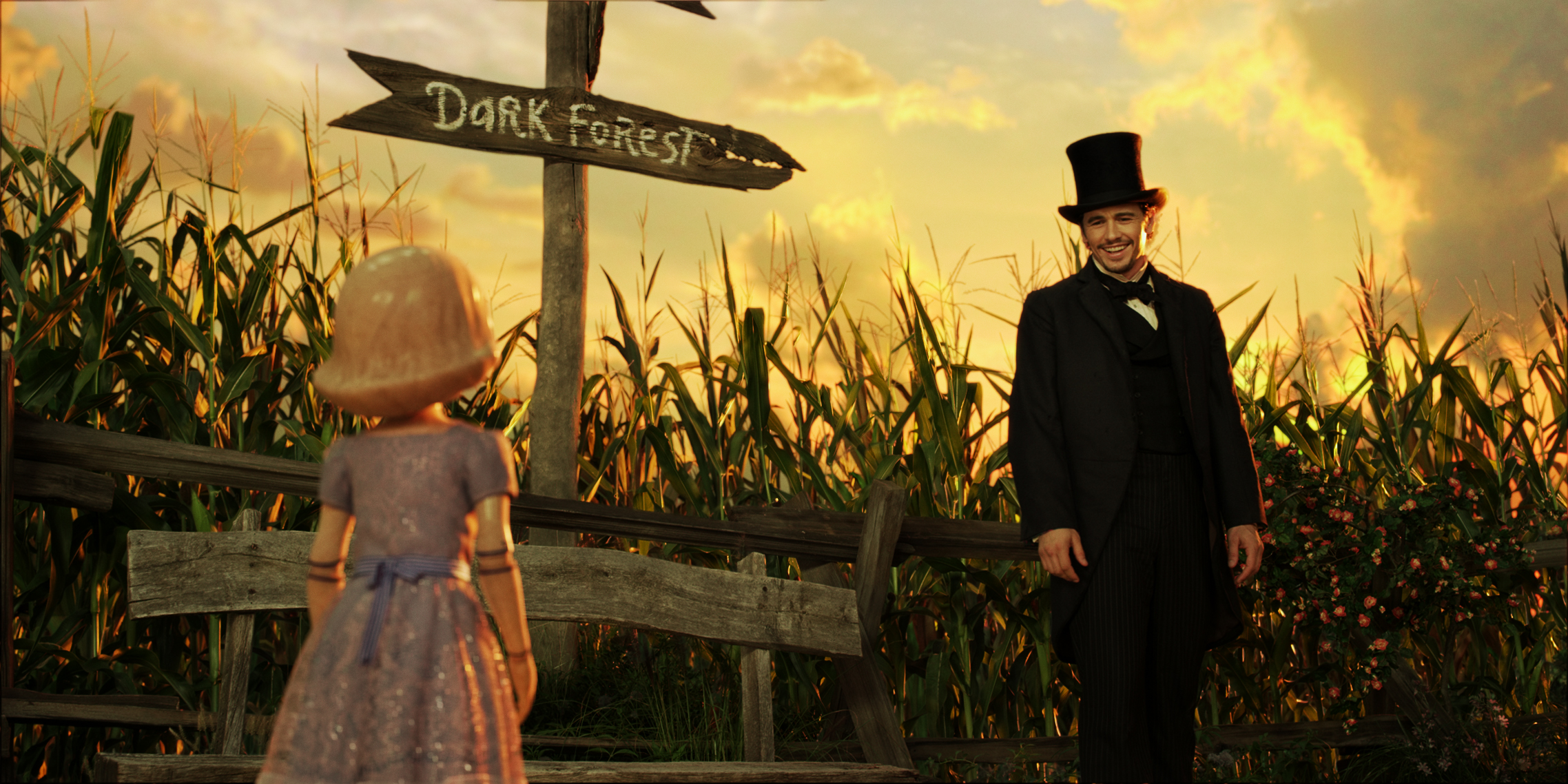
Oz the Great and Powerful might be more akin to Frank L. Baum’s original novel than the 1939 Judy Garland classic. And the titular character, Oz, is as he should be: a shady carnival swindler who, for the most part, only looks out for himself. There are brief hints of this in The Wizard of Oz, but as the primary focus of this film is Dorothy and her quest to return home, any of the faux-wizard’s selfishness is shrugged off as insouciance – or, at best incompetence. This is most true when the hot air balloon begins its ascent without the ruby-shoed clad Dorothy and the Wizard is unable to stop its lift off. Instead, he wishes everyone good luck and is whisked away to somewhere, much in the way that he was, presumably, brought to Oz in the first place.
In contrast, the most recent Oz film, one produced by Disney – something that most often gives me pause when the name Pixar is not positioned closely by – focuses on the wizard, limning a fine balance between his callow shadiness and the good-natured soul that he kind of wants to become.
And here is where Oz the Great and Powerful became much more like one of Baum’s tales from the land of Oz: there’s deep satire at play within this film. Mostly political, this film is less about a man’s journey to find himself in a fantastical land. In truth, Oz (James Franco) pretty much stays the same throughout. His grand actions in the third act are redemptive, but very pragmatic and self-serving. Rather this film is more about how the desire for change often facilitates such change. We – and the tinkers, the munchkins, and the farmers – want to believe that there is a greater good coming to make wrongs right, correct injustices, and cure ills. When Oz is sucked up in a tornado, drifts down from the sky and lands at the feet of Theodora (Mila Kunis), he becomes what she seeks: an answer to vanquish the evil from the land of Oz.
Of course, the evil itself is a manifestation of perpetuated propaganda. The evil witch purported in this film, at first, is Glinda (Michelle Williams), the witch that those familiar with the 1939 film will recall as the one who descends in a diaphanous bubble and offers Dorothy both protection and advice. Sure, this sets us some for some sort of twist that fits into our comfortable knowledge of The Wizard of Oz, but the progression of the betrayal and deception is rife with death plots, assassinations, and manipulation.
It’s kind of like something out of The Prince.
While Oz is the titular protagonist, this film uses him more as a vehicle to illuminate the infighting between the three folks in power. The three witches, women all of them. And each one is strong-willed. While mostly one-dimensional, they truly become the protagonists and antagonists throughout the film, which also makes this tale more of an origin story of the wicked witch than of the wizard himself.
After all, we already know that the wizard is just an illusory puppet. Here we learn that it’s the women that pull the strings.
However, in the end, there is a great – perhaps appropriate — irony in this film. The meat of Baum’s novel centers on two themes: the journey of women’s suffrage and the disappearance of the gold standard. The former is embodied by Dorothy, Glinda, and the Wicked Witch of the West. The latter is suggested by the ruse created by the emerald city. It’s walls are hollow and built on a trick (the Wizard). If his fallacious nature is discovered, the place will crumble, but he is not necessary aside from being a figurehead.
Oz the Great and Powerful cost around $215,000,000 to make, and while the narrative is surprisingly better than I anticipated, the visuals are lacking. Without mistake, the colors are beautiful, but Oz’s entry into this new world is a mix of obvious, 3-D-pandering animation and close-ups shot on a soundstage, wherein things appear real. Many times, the combination of animation and reality is sharply juxtaposed. This is most noticeable when the Wicked Witch appears. Her body is the actress’, but her face is something out of a Dreamworks cartoon: shading is minimal, and the features are rounded like an imaged airbrushed in Photoshop.
What I mean to suggest about the correlation here is that an awful lot of money was spent to create a spectacle, whose faults are glaring. Like the audience member calling out Oz in the beginning, we see the wires holding everything up, and from here on out, the visuals become less and less impressive.
But yet, the film grossed nearly $300,000,000, so perhaps it too has created the illusion of success.





